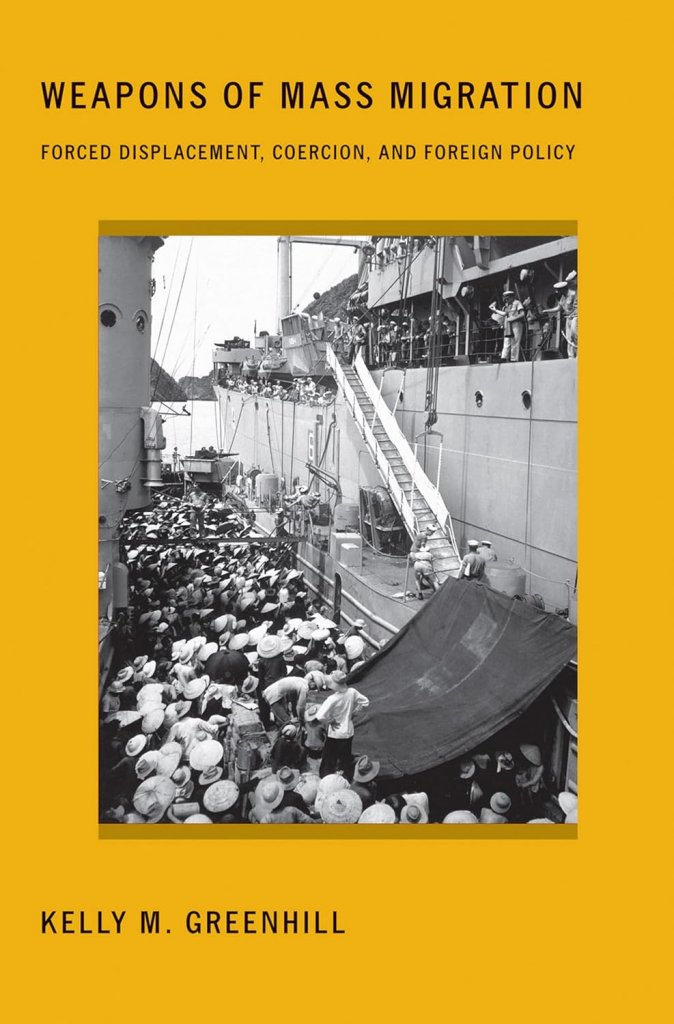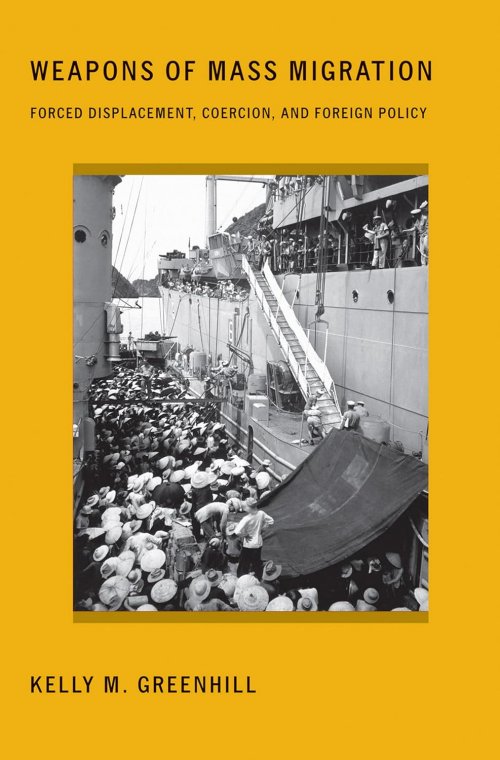Book Review: “Weapons of Mass Migration” by Kelly M. Greenhill
In a world where traditional notions of conflict and coercion are evolving, Kelly M. Greenhill’s “Weapons of Mass Migration” provides a groundbreaking exploration of an unconventional yet highly effective form of coercion—engineered migration. As a seasoned reporter for Maier Files Chronicles, I find this book to be a captivating and thought-provoking examination of the intersection between geopolitics, human migration, and statecraft.
Introduction: Rethinking Coercion
Greenhill begins with a powerful quote from Samar Sen, India’s ambassador to the United Nations, questioning the distinction between traditional aggression and a more subtle, migration-driven coercion. The author then plunges readers into a specific historical moment when the European Union lifted sanctions on Libya in exchange for curbing the flow of North African migrants—a decision that highlights the potency of migration as a tool of influence.
Analyzing Coercive Engineered Migration:
Incidence, Success, and Mechanisms
The book meticulously addresses three crucial questions: How often does coercive engineered migration occur? How often does it succeed? And what are the mechanisms behind its success or failure? Greenhill’s work is grounded in both large-N analyses and comparative case studies, providing a comprehensive understanding of a phenomenon that has been systematically overlooked.
According to Greenhill, there have been over fifty attempts at coercive engineered migration since the 1951 Refugee Convention, with an impressive success rate of over fifty percent. This success rate, in comparison to traditional military coercion, underscores the effectiveness of this unconventional strategy. The book’s focus on measurement, evaluation, and description contributes significantly to our comprehension of this understudied aspect of statecraft.
The Coercive Power of Migration: A Two-Level Strategy
The author’s central claim introduces a compelling framework: coercive engineered migration operates as a two-level, asymmetric coercion by punishment strategy. The challengers leverage competing domestic interests within target states, manipulating the costs imposed on civilian populations to achieve political goals. Greenhill draws parallels between conventional coercion through military means and the use of migration as a demographic tool, emphasizing the intentional imposition of costs on civilian populations.
Pathways to Coercion: Threats and Norms-Enhanced Political Blackmail
Greenhill elucidates two pathways through which coercive engineered migration imposes costs on targets. The first involves threats to overwhelm a target state’s capacity to accommodate an influx, while the second exploits the heterogeneity of interests within polities, leading to political contestation and discord. The author introduces the concept of hypocrisy costs, emphasizing the impact of a perceived disparity between professed commitments to liberal values and demonstrated actions.
Vulnerability of Liberal Democracies: A Double-Edged Sword
The analysis suggests that liberal democracies are particularly vulnerable to coercive engineered migration due to their competitive, pluralistic, and transparent policymaking nature. The existence of codified human rights and migration-related commitments further increases vulnerability. While evidence points to liberal democracies being the primary targets, Greenhill acknowledges that illiberal regimes are not immune to this form of coercion.
Limitations and Implications: A Strategic Tool with Real Costs
The book does not portray coercive engineered migration as a super weapon, highlighting potential miscalculations and the sentient nature of the weapon itself—the migrating population. Greenhill emphasizes that the circumstances for success are highly circumscribed, and challengers will prevail only if targets perceive the costs of concession as lower than the costs of resistance. The implications of this unconventional strategy are significant, especially for weak state and non-state actors with limited options.
Policy Implications: Navigating Immigration Anxiety
Greenhill concludes by addressing the contemporary relevance of her findings in today’s immigration anxiety-ridden environment. The shift in the definition of national security threats and the practice of security policy underscores the impact of migration-related fears on political and military responses. The case studies presented in the book offer valuable insights for policymakers grappling with the complexities of migration and coercion in the present era.
Conclusion: A Must-Read for Understanding Modern Statecraft
In “Weapons of Mass Migration,” Kelly M. Greenhill unravels a complex web of statecraft, coercion, and human mobility. Her meticulous research, combined with a compelling theoretical framework, makes this book an essential read for anyone seeking to understand the evolving dynamics of geopolitical influence. I commend Greenhill for shedding light on a topic that demands attention in our ever-changing world…

Amazon.com: https://amzn.to/3SExVzH

Amazon.de: https://amzn.to/48Vw1k9




